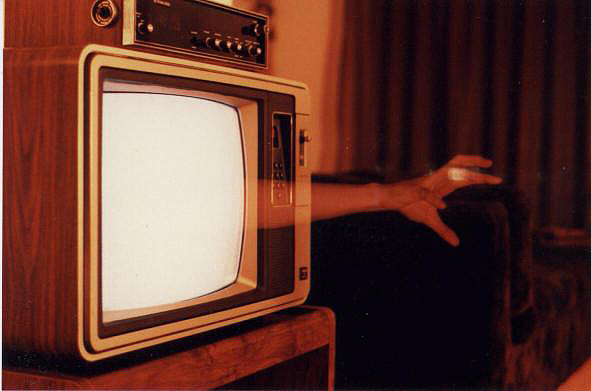
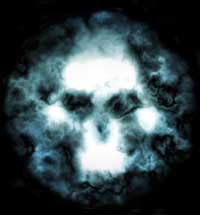
 |
Ghosts and Poltergeists! |  |
Human beings have probably enjoyed telling and listening to ghost stories for as long as human beings have had a language. It’s fun to be frightened when one knows one is really safe after all, hence the popularity of horror films and horror fiction. The body of a dead human being is almost instinctively frightening to most people— cold, stiff, with ghastly color and terrible blankness of expression. To enhance one’s fright further, one need only imagine the body becoming somehow reanimated, yet retaining all the essential features of death— including the additional horror of decay and decomposition.
Ghost stories offer one step up in sophistication from the walking dead. Ghosts are more insubstantial, and better suited to the average living room, than animated corpses. Paperback book sales indicate that ghost stories are as popular today as they ever were, especially if the book gives the impression that the story “really happened.” The haunted house is a standby of paperbacks, film, video games and TV as the 21st century gets well under way, and is as sure-fire a theme as it has ever been.
The pitfalls that ghost stories offer for well-meaning investigators is illustrated in a classic way by the fate of the magnum opus of England’s 19th century Society for Psychical Research, the 2-volume, 1,300-page Phantasms of the Living, published in 1886. The aim of this work was to collect cases in which, for instance, an individual, at the time of death, is seen as an apparition by relatives and friends hundreds or even thousands of miles away, and the sighting is exhaustively documented by letters, diaries, or multiple simultaneous witnesses. In almost every case in the book, the relatives were said to have documented the apparition before having heard actual confirmation of the individual’s death. But, as usual, the facts turned out to be quite different. In a devastating article published in 1887, A. Taylor Innes revealed that in not one of the cases collected did there exist any letter or document written at the time by anyone involved. This kind of discovery has been made over and over by diligent investigators. Ghost stories “grow in the telling,” and trivial everyday events quickly grow into signs, portents, and phantasms of whatever important event is worth spinning a tale about.
It must be emphasized that these are not isolated cases. In every case where a thorough investigation has been undertaken, “ghost stories” collapse utterly. For instance, Borley Rectory in England was made famous during the late 1930s as “the most haunted house in England,” and as “a really haunted house.” When the Rectory and the tales about it were thoroughly investigated in the mid-1950s by a magician and two parapsychologists, every feature of this “iron-clad case” collapsed. In the US, the so-called Amityville Horror haunted-house claims were revealed upon investigation to be a hoax, with many features very similar to those of the Borley Rectory hoax. (See references.) Public levels of belief in the reality of haunted houses seem to be entirely sustained by foolish movies and moronic TV programs depicting entirely fictitious and completely fanciful supernatural situations.
No two ghosts are described as being distinctively alike in appearance. Some few are the stereotypical white-sheeted figures, others look like normal folks except for being transparent or being able to walk through walls, others look like recently-dead or long-dead corpses, often bearing monsterous wounds. Ghosts are only rarely described as being “solid,” which makes it puzzling if they are also said to wear clothes, make noise, move things around, or even just produce “a cold feeling” in the air. Probably ghosts are reported as completely invisible, more often than not. Visible ghosts who wear clothes or sheets or robes pose a very knotty metaphysical problem. Are the clothes we see woven of the spirits of sheep or of cotton plants?!? What about ghosts from the late 1960s who wear polyester double knit leisure suits?!?
Ghosts which are completely invisible, but still manage to make noise and move objects are called poltergeists (“noisy ghosts”). Typically, in a house haunted by a poltergeist, furniture is moved, things fall from shelves, jars and bottles are opened and overturned, objects are tossed through the air, and breakables are broken, all apparently without anyone nearby. In essentially every case in which poltergeist phenomena have been investigated, and were not found to be due to natural causes (e.g., vibration from passing trains, subways, mild earthquake tremors, etc., sudden strong drafts, or subsidence and settling of the house), there have been one or more adolescents in the family. Further, the pattern is that the adolescent is frequently highly restricted and repressed. Inexperienced investigators whose heads are full of “psychic” marvels have often concluded that poltergeist phenomena are therefore not due to ghosts at all, but are the result of the frustrated adolescent channeling blocked energies into psychokinesis! That is, that the adolescent creates the poltergeist phenomena by “mind power,” sometimes without being aware of it. It's typical of pseudoscience to “explain” one impossibility in terms of yet another impossibility.
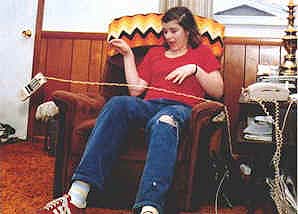 |
More experienced investigators have simply
laid a trap for the
adolescent, and in every case have managed to catch him or her using
not the
unknown powers of mind, but the well-known powers of fingers, arms or
feet to achieve the spirit manifestations. Only the most elementary
stealth and misdirection, well within the abilities of most 10-year-old
children, are required to produce even the most “authentic”-looking
poltergeist manifestation. In recent years, TV news cameramen
have even been known to help the kids or teenagers set up and perform
the poltergeist stunts, to produce impressive footage for the evening
news. |
Parents, law-enforcement officers and
reporters spend their time looking for the “haunts” and marveling at
the “spirit manifestations,” never paying any attention to where little
Timmy
or Tish happen to be or what he or she is actually doing. Investigators
have witnessed teenagers leaning into a doorway and tossing a plate
directly at their seated, distracted parents. The parents look up to
see a plate in mid-air moving rapidly toward them, with nobody around.
The child is already halfway back to his room by the time the plate
strikes the wall, ready to pretend to be asleep or to cry out, “What
happened, Ma?” as the mood strikes. It is an easy way to get your name
and picture in the papers, and an easy way to give you and your friends
a real opportunity to snicker justifiably at the stupidity of
adults. Newspapers and TV news programs find ample space and time
for brain-dead reporting on the inexplicable wonders of the latest
poltergeist manifestation, but when the kid is caught redhanded in the
act, that fact is somehow never considered newsworthy. The case
is left a total mystery, as far as news media are concerned.
Poltergeist phenomena seem to be about the most commonly reported “house hauntings,” especially in the US and England. Newspaper and TV reporters consider such stories a godsend— particularly in times when there are few other items of local interest. As long as such stories and stunts continue to receive massive, mindlessly uncritical publicity, both in the form of supposed “true stories” and in the form of incessant repetition of the mythology in films and TV series, new instances of house hauntings and ghostly antics will continue to surface with depressing regularity.
When is a ghost not a ghost? Why, when it's merely an after-death communication! Pseudoscience allows you to validate any vivid memory or dream of a recently-deceased friend or relative as an exciting message from the Great Beyond! No spirit medium or psychic or anything or anyone else savoring of the criminal classes is wanted or necessary. One of the great attractions of pseudoscience is the way it supplies supernatural meaning to even the most ordinary and hum-drum daily experiences.
Ghosts are very similar to UFOs in nearly every sense, and just as UFO photos are ubiquitous in books, magazines and on the Internet, so are ghost photos. In the late 1800s and early 1900s ghost photos tended to be simple double-exposures. But as IQs have apparently dropped steadily since then, and even the most elementary understanding of the concept of photography, or the nature and operation of cameras, has ceased to exist for the general public, ghost photos have tended to show just about anything imaginable— shots of hair, camera straps, fingers, portions of clothing, dust, smoke, flying insects, water droplets and smears on glass, etc., close to the front of the lens are overwhelmingly popular. So are flares produced by allowing lights to shine directly into the lens, or by carelessly exposing film to light when putting it into or taking it out of a camera. One of the most frequently-encountered and ineffably boring substitutes for those good old double exposures is the “orb,” which is usually an image of the aperture of the camera lens produced by having a bright, small light source somewhere in the frame, shining directly into the lens, producing multiple reflections. Some of my students in Physics 341 Pseudoscience, by judicious selection of camera direction, have managed to fill rooms with far better and more impressive orbs than normally seen. Hint: film cameras have lenses that generally require large apertures to get enough light on the film, so the orbs are correspondingly large. Digital box cameras have tiny lenses with even tinier apertures, and so produce orbs that are tiny, perfect spheres, sometimes even showing diffraction patterns.
Of course, if ghosts are anything at all, they are non-material. So even a hypothetical ghost could not be seen, create sounds, move objects, or in fact be observable, detectable or perceptible in any way whatsoever. In practice, as so often in pseudoscience, the word “ghost” is simply a blanket name for ignorance. If I see a light or hear a sound and cannot immediately identify the source, due to my physical or intellectual laziness, I proclaim that I have experienced a ghost! The ghost phenomenon is defined negatively: if I don't know what it was, then it was a ghost!
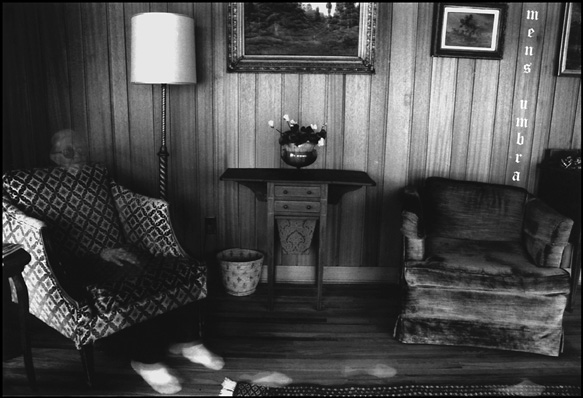 |
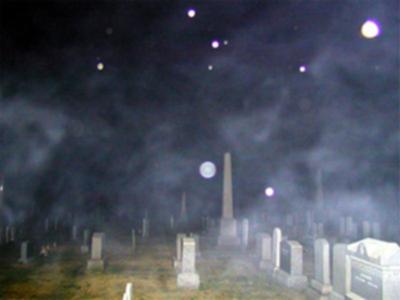 |
Polls which survey religious beliefs of American adults, such as a recent Harris poll, indicate that most adults claim simultaneously to hold conventional Western religious beliefs and also beliefs in various pseudosciences which in fact directly contradict their conventional beliefs. Obviously, a person who believes that human souls go to Heaven or Hell after bodily death should not also, simultaneously, believe in reincarnation, or in ghosts! Many of these same people presumably would also claim to agree with the early Christian belief that those who die cease to exist, but will be resurrected in incorruptible bodies on the Day of Judgement. Of course, logic and reason are not often used in evaluating one's beliefs, but it is still somewhat staggering that so many people can comfortably believe in two or more directly and totally contradictory concepts.
For further reading—
Links---
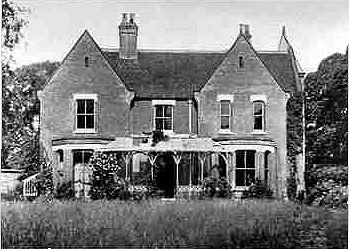 Borley Rectory, in England, which turned out to be secretly owned by promoter Harry Price, who himself fabricated all the tales and history of the house's haunting, and directly profited by all the tourist business the house did as a result of his promotions. |
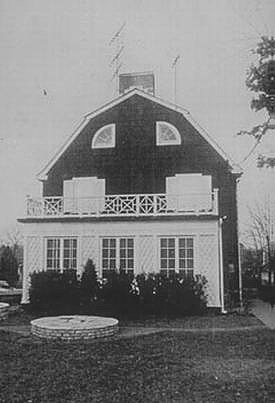 The supposed haunted house in Amityville, NY. Actually, no owner or renter of the house has ever witnessed any “ghostly” visitations. The completely fictional tales of hauntings were initially concocted by novelist Jay Anson, then published as fact. |
Acknowledgments—
Dr. Rory Coker, Professor of Physics at the University of Texas at Austin, is the author of this fact sheet. The International Cultic Studies Association, a professional research and educational organization concerned about the harmful effects of cultic and related involvements, prints and helps distribute these fact sheets. Because these fact sheets seek to stimulate critical thinking, rather than advance a particular point of view, opinions expressed are those of the authors. These fact sheets may be copied for educational purposes, but they may not be reproduced for resale.
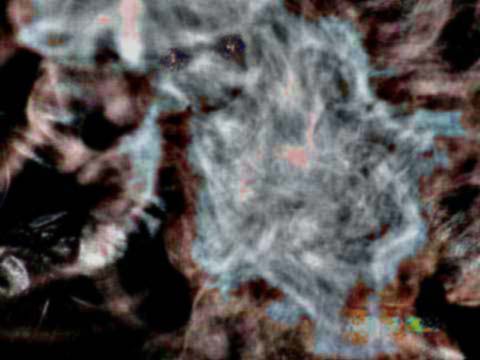 |
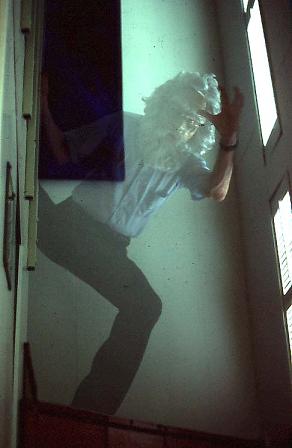 |